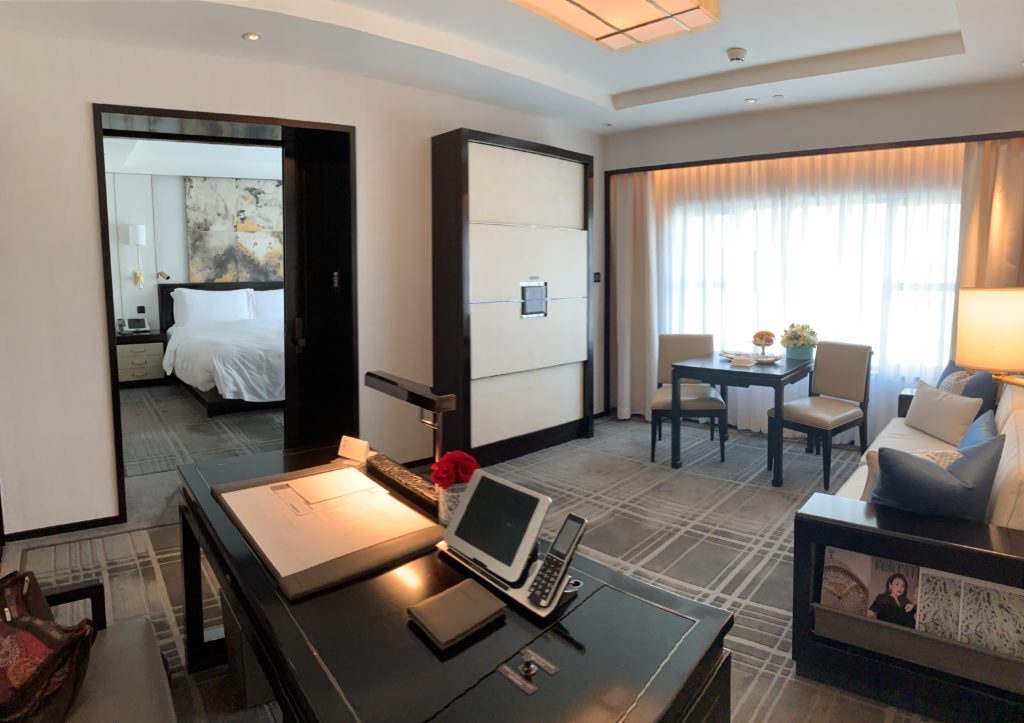Varya visits China to experience the main tourist cities of this impressive country: Beijing, Xi’an, Guilin and Shanghai. Please join her as she walks through centuries of the past and into the sizzling energy of the present fast-moving economy, enjoying the ultra- luxury provided by Imperial Tours.

Beijing Entry
In the 12 years since I have last visited Beijing, it has moved from a struggling polluted city trying to pose as a world-class metropolis to a vibrant urban star, filled with the vitality of the young people who flood its streets and offices. I was told that the education level here is now so high that there are not enough jobs for the college graduates hoping to carve out a bright (capitalist) future.

Its broad main roads, once filled with bicycles, are now traffic nightmares during rush hours, as most families can now afford a car (with Buick the most favored), and with new restrictions on the days of the week each registered car can drive within the city, some families have 2 or 3 cars to assure perpetual transportation. I have not yet been on the large subway system but I can see electric buses trying to ease the situation. Shared-bicycles, picked up by a phone-app, are available in large clusters in certain areas and the bicycle lanes are a safety dream, bounded by metal gates to separate them from the streams of traffic.
I arrive a day early to recuperate from the 12 hour non-stop flight from San Francisco and the change of time. I stay at the brand-new hi-tech Puxuan Hotel my first night, a place of serenity and beauty, and decide I will spend the morning walking to a local lake and visiting some of the traditional hutong living areas of this ancient city. It is hot, but not unpleasant, as I walk past some large monumental buildings such as the Beijing New Culture Movement Hall, past large groups of Chinese tourists headed for the moated-enclosure of the Imperial Palac, to the entrance to Beihai Park, known as the oldest Chinese imperial garden, founded in 1166. There is an entrance fee, low for locals showing their identity card and $3 for outsiders, so public parks are no longer exactly free, the government perhaps realizing the cost of upkeep can be at least party subsumed by those with an ability to pay. “From each according to his ability . . . “
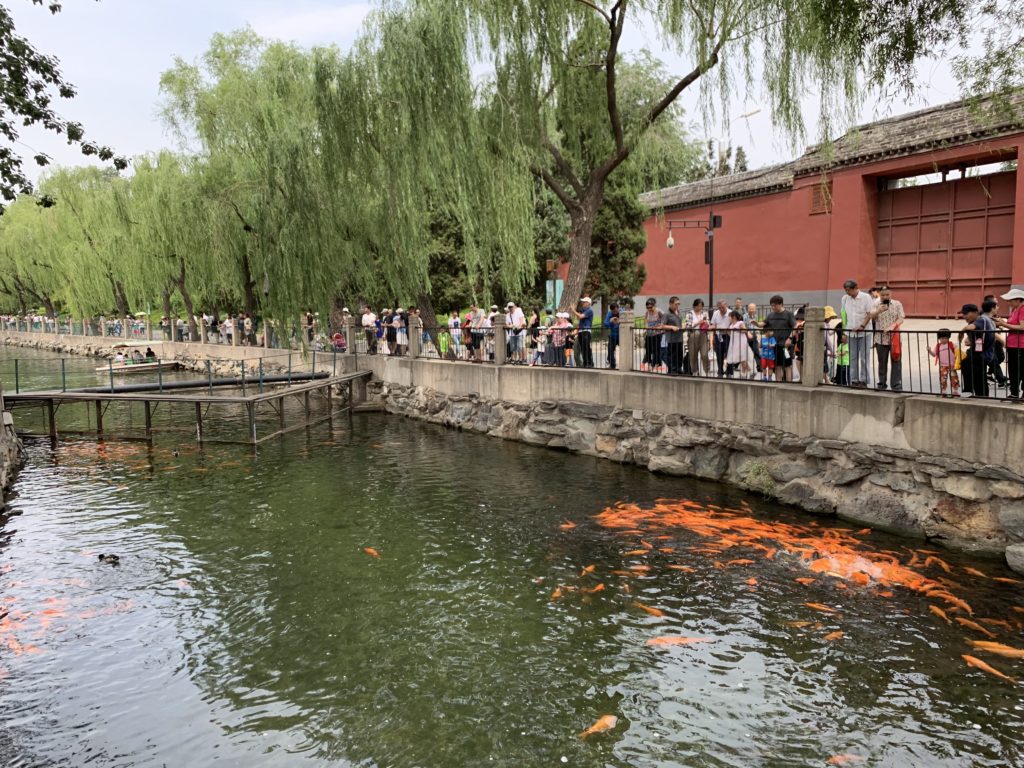
It is Saturday and the park is filled with families enjoying free time, renting small paddle boats to fill the lake with colorful floats, while around the perimeter small and larger groups are engaged in Tai Chi or Qi Gong exercises, while others walk and talk. People look well-dressed and relaxed, mainly in t-shirts and pants or shorts, sporting every international theme. Three older women walk by in dresses and pearls, old friends or sisters, while I see children playing with scooters, chasing after bubbles blown by their parents, kicking a hackey-sack. I stop a wild soccer ball with my feet and tap it back to the young boys involved in their game.
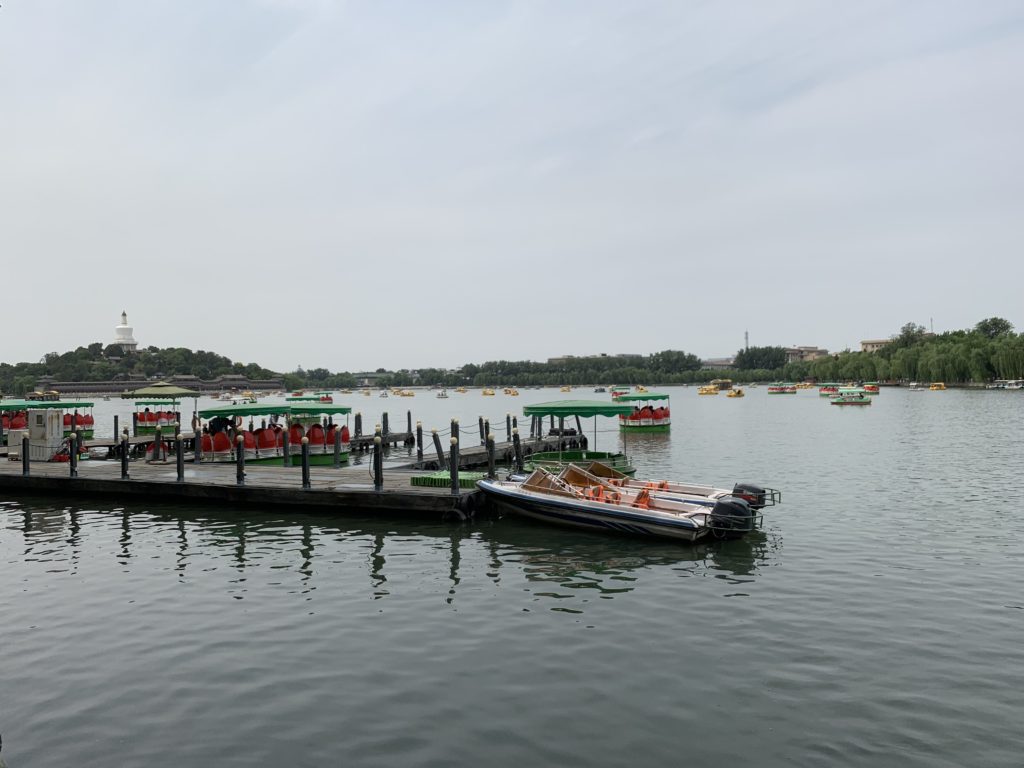
There is a Buddhist temple on a hill in one part of the park, requiring a separate entrance fee of $1.50, and I go in and find the four guardians at the doors and inside incense and bowing visitors along with a great Buddha and carved historical disciples lining the sides of the small enclave. People do not seem intimidated to prostrate themselves in this new China where prayers may no longer be needed for survival.
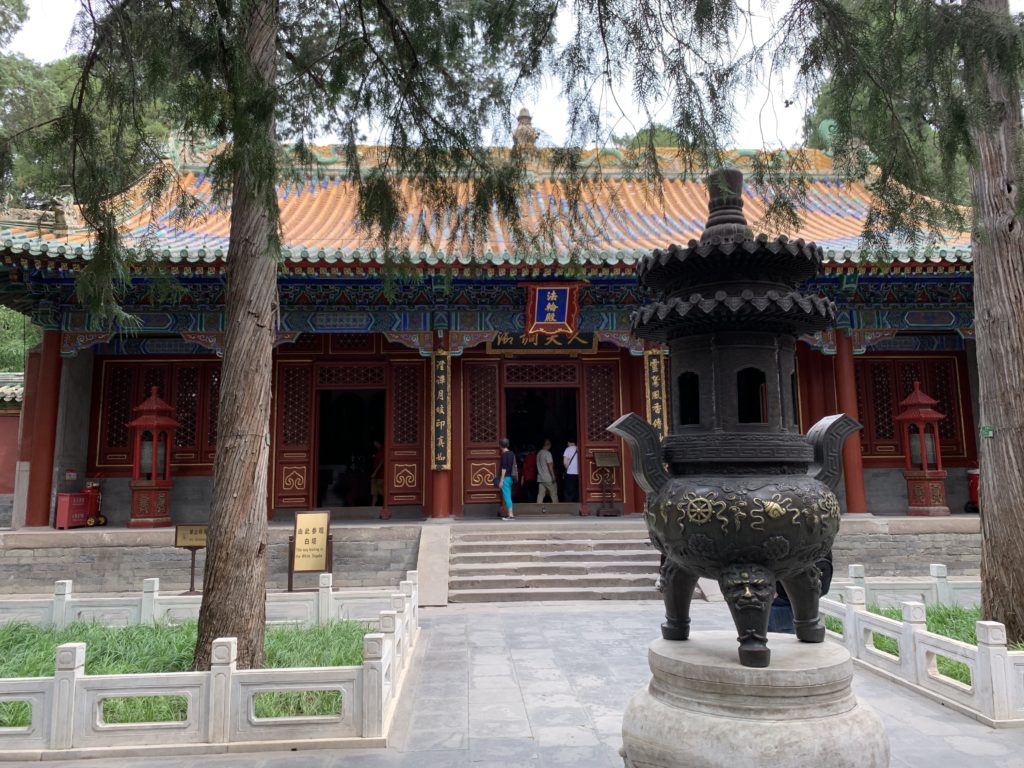
As sometimes happens when I have a tour plan in mind, I am dedicated to fulfilling my objective and sometimes forget about the process. But suddenly I realize that being in this park, of which I was unaware when I started out this morning, is the destination and I relax and enjoy the warm ambiance of happy people enjoying themselves in a lovely place. It reminds me of Central Park in New York, although cleaner and with no safety concerns. Even the public toilets I have encountered this morning are immaculate and new, my litmus test for urban development and public civility.
I exit the park and abandon my intended route, finding myself once again in bus and car traffic. As I start back, I spot a sign in English identifying the Gaowu Hutong, a traditional residential area, and walk into a quiet very narrow street faced with new grey concrete bricks probably government mandated and supplied so that the old structures are hidden behind new uniform walls. These are small villages with tiny shops and hidden alleyways, surrounded sometimes by tall apartment complexes. It is quiet here. I run into two guided groups of Chinese tourists also visiting this hutong area and realize I have unexpectedly found myself where I wanted to be.

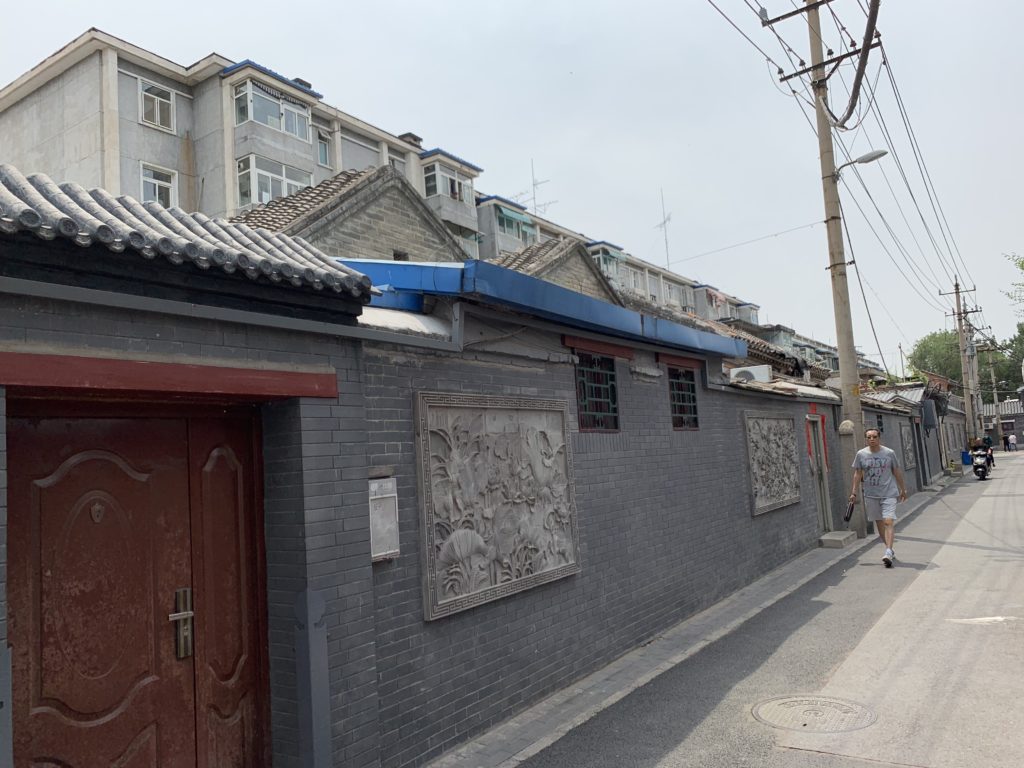
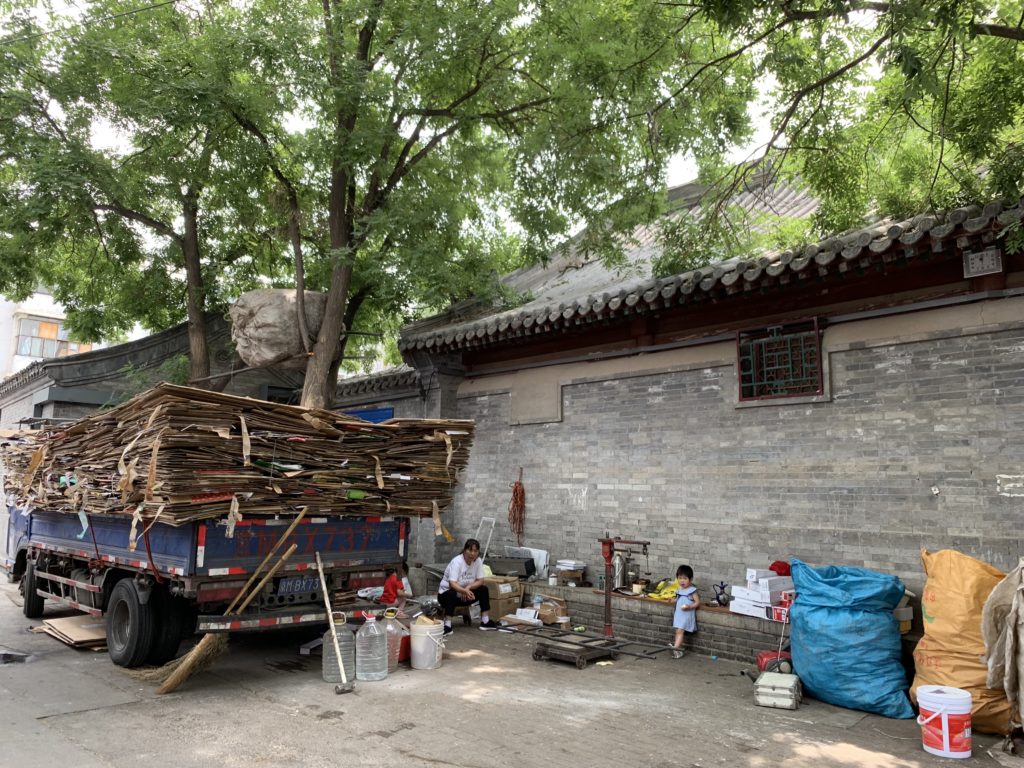
Later in the day, after a cool break at the hotel, I walk out to find a recommended Vietnamese restaurant, called Susu, for lunch. Due to the magic of the VPN I downloaded onto my phone before I left the U.S., I have Google maps (Google is blocked through normal cellular and wi-fi channels in China) which takes me into another hutong and to the intersection of a small street and an even smaller alleyway with no restaurant to be seen. I stand there for a few minutes trying to figure out what to do, perhaps who to ask, thinking maybe it is closed on Saturday, and finally a young Chinese couple comes by seeing me looking puzzled and asks whether I am looking for the restaurant and points me down to a nondescript door without any sign at the very end of a long alleyway. I walk in and am shocked to find a very busy filled-to-capacity air conditioned up-scale restaurant, bubbling with chatter and I sit at the bar where two young men, looking about 16 years old, are frantically putting together drinks for the clientele. I have a fantastic crispy tofu salad and no drink which costs me $10, not a low-budget meal, and sit and wonder how this entirely local casually-dressed crowd of young people can afford such fare.
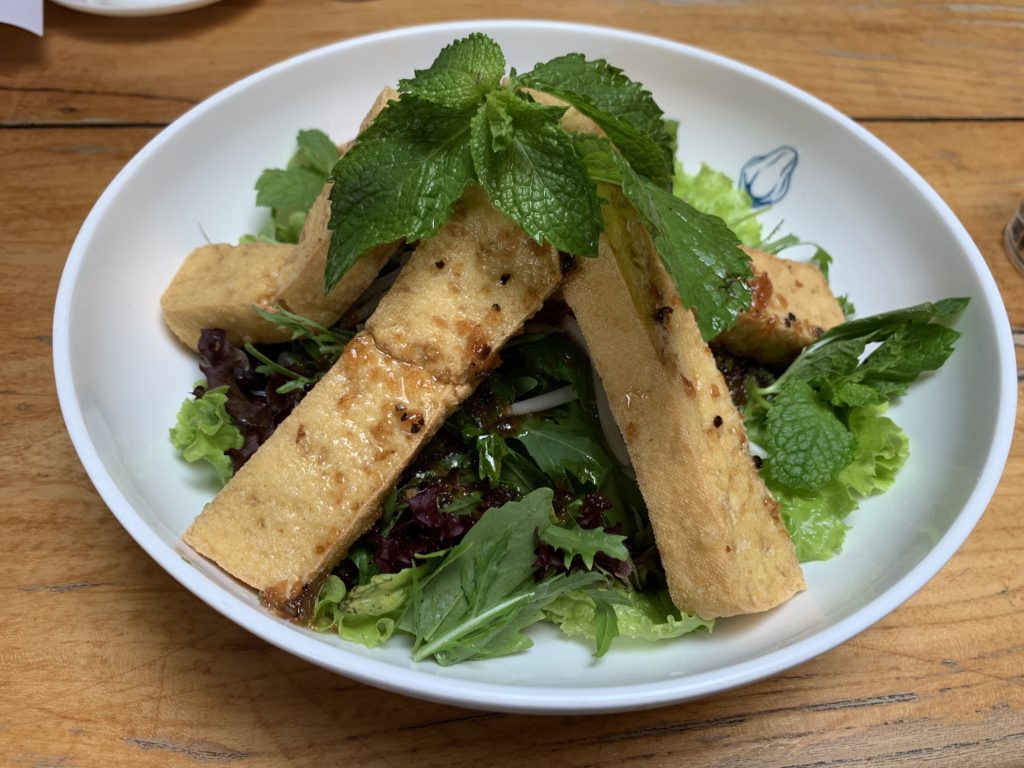
The National Museum of Art is my last stop before moving to my new hotel to meet my group. The museum is free but ID needs to be provided and my passport is scanned before entry as are the local ID cards of others. The main body of the art here is —socialist realism. Beautifully executed, realistic depictions of the diverse peoples and cultures of China. A source of national pride. And a quick walk through is all I need. There is also a special exhibit on printmaking in China, which developed late and was deeply influenced by the West and another small exhibit on exquisite small clay figurines produced only in one area of Southern China and now exported and proudly proclaimed as a source of revenue from “international trade”.
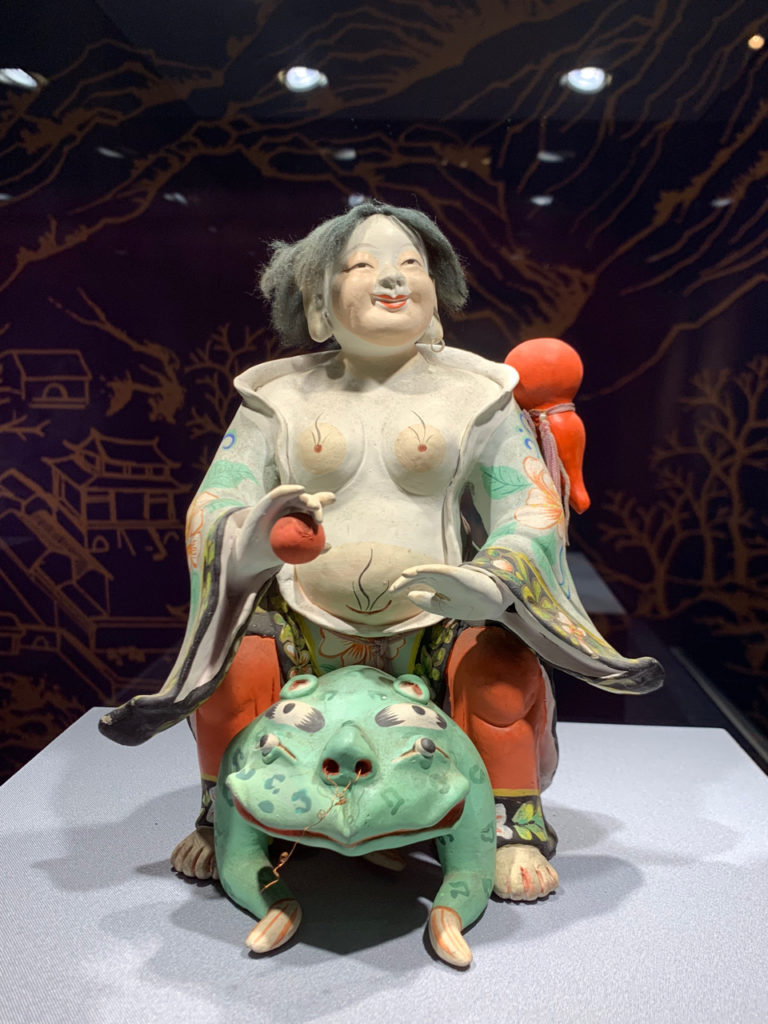
I meet my group, a little late after an accidental jet-lag nap in my glorious suite in the Peninsula Hotel and enjoy the first of many hosted dinners with my interesting fellow travelers. I am up at 3:30 am and the beginning of a full day.
